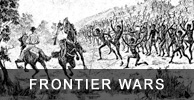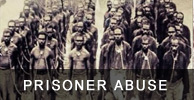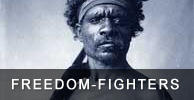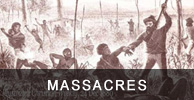It's about time Australia owns up to its significant history of slavery
Slavery is part of Australian history, as much as the shearer, the convict and the Anzac. And, like Affleck, we need to stop living in denial of our own racist past.
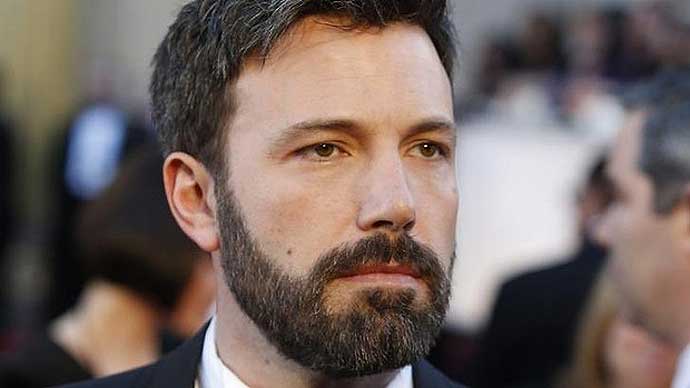
Ben Affleck has an ancestor who owned slaves, something the star was hoping to keep hidden.
(Photo: Reuters)
Alecia Simmonds 'Daily Life' 28 April 2015 (some editing by SU)
Ben Affleck and Australia share a lot in common. We're rich, we're white, we're 'liberal', and we have a long history of slavery that makes us, in Affleck's words "uncomfortable".
In case you missed it, Affleck took part in a television show in 2015 called Finding Your Roots, but when the show found one rather ugly root, he asked them to hide it. The root in question was the revelation that one of Affleck's ancestors owned slaves. Sure enough, the program acquiesced and cut it out. When WikiLeaks exposed that this omission was because of Affleck's request, the internet responded as the internet does: with characteristic side-eye and flecks of twitter-bile.

Enlarge image
Selling slaves in the heat of the blackbirding period.
Blackbirding in Australia at its peak
I can understand Americans being annoyed at Affleck's denial of his racist past. Most thinking Americans are au fait with the fact that their country was built on the backs of slavery, that their wealth has its roots in slave labour and that this history can help to explain why African-Americans still experience discrimination today. Australians, on the other hand, are like Affleck: blissfully ignorant until we're forced to confront it, at which point, we ask that it not be mentioned again.
"Slavery?" You ask. "Don't we all just come from diggers and explorers and convicts – loveable losers and ill-fated battlers whose deaths we spend billions commemorating? Violence happens on foreign soil. We're the lucky country!"
At the risk of authoring a macabre Buzzfeed-style list, let me give you five examples of slavery in Australia. And in case you want to get all Ben Affleck about it: no, you are not personally responsible for this history. But we are all responsible for how we remember our nation's past and how we might go about redressing its violence. In the haze of Anzac Day fatigue, let's turn to a less glorious history; one whose traces you can see in everything from the sugar you put in your coffee, to tacky paintings of outback stations in doctors' surgeries, to the disadvantage experienced by Pacific Islanders and Aboriginals today.

First Nations people were used in as slaves by early settlers, the pearling industry, the pastoral industry and for housework and industry. There were both male and female slaves from 'chain gangs' through to imprisoned by fear and the withholding of wages.
Aboriginal slavery disguised as 'Protectionism'
Between 1860 and 1970, Australia effectively had state-sanctioned slavery of Aboriginal people. Historians Dr Rosalind Kidd and Dr Thalia Anthony have documented how Aboriginal Australians of all ages were forcibly sent to work on sheep and cattle properties across Australia under government schemes that were supposedly "designed to protect them". Laws in Western Australia allowed Aboriginal children to be sent from the age of 12. The conditions were often horrific: 16-hour days, floggings and forced removal from families. They were either unpaid or received only a few shillings pocket money. State governments assured these workers that their wages were placed in a government trust, but most never saw a cent. Aboriginal people have been trying to recuperate these stolen wages for years. And how much have we offered them? In Queensland you can claim up to $7,000 and in Western Australia a measly $2,000. Yup, a few thousand dollars for a lifetime of forced labour. Aussie Aussie Aussie! Etc.

'Blackbirding' of South Sea Islanders
Between 1842 and 1904, tens of thousands of people from South Pacific islands were captured or coerced into working as slaves on the Queensland sugar plantations. Yes, that same great Australian sugar industry that is now worth $2 billion in exports. As convict labour petered out in Queensland, slave traders prowled the Islands of the Pacific. Their victims were kidnapped, shackled, flogged and many died of disease or maltreatment on the four-month trip over. Once here they were sold to plantation owners. Michael Perry reports that a strong male would cost the equivalent of between $5 and $19 while women, particularly Tahitians, fetched around $32. When slavery was outlawed in 1901, unions banned Pacific Islanders from working on farms and many were simply deported. Later, those who remained were denied the welfare and citizenship rights afforded to Aborigines in the 1967 Referendum. (See Sugar Slaves)

Pearling luggers in Roebuck Bay, Broome - Blackbirder's would trick and kidnap First Nations people along the Dampier Peninsule and beyond for slave labour in the Pearling Industry and beyond.
Slavery in the pearling industry

Enlarge image
From the 1870s to the turn of the century, Aboriginals, Malays, Timorese and Micronesians were captured and sold as slave-labour in the pearling industry on the far north-west coast of Australia. Historian K Forrest estimates that around 1,000 Asians were captured and sold into slavery. Aboriginals were rounded up from pastoral stations and, according to missionary and court reports from the time, sold for around five pounds. Pregnant aboriginal women were particularly prized because their lungs were believed to have greater air capacity. The average life expectancy of a slave in the pearling industry was "painfully short". In the book How the West Was Lost, historian Don McLeon writes, "Sickness was rife, colds and influenza typically led to pneumonia and death. The pearlers were alleged to have boasted that so long as they could hold their divers for three months, they made a profit on the investment." But they would often die of beri-beri before then.
Slave money funded Australia's early colonial development
A recent University College London study that traces the legacies of British slave-ownership has shown that Australia was partly built from slave money. Following the abolition of slavery, British slave owners received compensation from the British government for the loss of their 'property' (read: people sold into slavery). In fact, they received 16% of Britain's entire GDP in one year. What did they do with all that money? Well, many of them came to Australia and New Zealand where they bought up vast swathes of land (and in the process dispossessed Aboriginal people); they became directors of banks, museums and libraries, they built churches and they became Governors who, in the case of Governor Broome, contributed to arguments in support of slavery of Aboriginal people. Instead of gaping vacant-eyed at kittens and recipes between 3-4pm today why not flick through the database to see some more examples of how the blood and dirt of slavery is Australia's own blood and dirt.

Map of Blackbird recruiting routes, 1863 - 1904
Slavery continues today
Between 2004 and 2014, 235 people were referred to the Support for Trafficked People Program as victims of slavery. Yes, slavery continues in Australia today. It no longer looks like Twelve Years A Slave. It now looks like that girl forced into marriage at the age of twelve, that hospitality worker who had her passport taken from her and is told that she must work 15 hour days to 'repay her debt' or sex-trafficked women shackled to beds.
The point is that slavery is part of Australian history, as much as the shearer, the convict and the Anzac. And, like Affleck, we need to stop living in denial of our own racist past.
Alecia Simmonds is Chancellor's Postdoctoral Research Fellow at the University of Technology in Sydney, Australia
Blackbirding: The term may have been formed directly as a contraction of blackbird catching; blackbird was a slang term for the local First Nations people. It might also have derived from an earlier phrase, blackbird shooting, which referred to recreational hunting of Australian First Nations people by early European settlers.
Black Velvet has been said to have originated as nineteenth-century military slang, naming an Irish infusion of stout, champagne and cider. Others believe that the name originated from the skin of 'Aboriginal' women as particularly velvet-like to the touch.
BOOK - paperback, 256 pages, Author: P. Hetherington, Year: 2004, ISBN: 9781876268732
From the 1870s, Aboriginal children were widely 'unemployed' in a complex web of contrast and apprenticeship law, in the pastoral and pearling industries in the North West. Often kidnapped by 'blackbirders', these children received no wages and had no opportunity to attend school.

